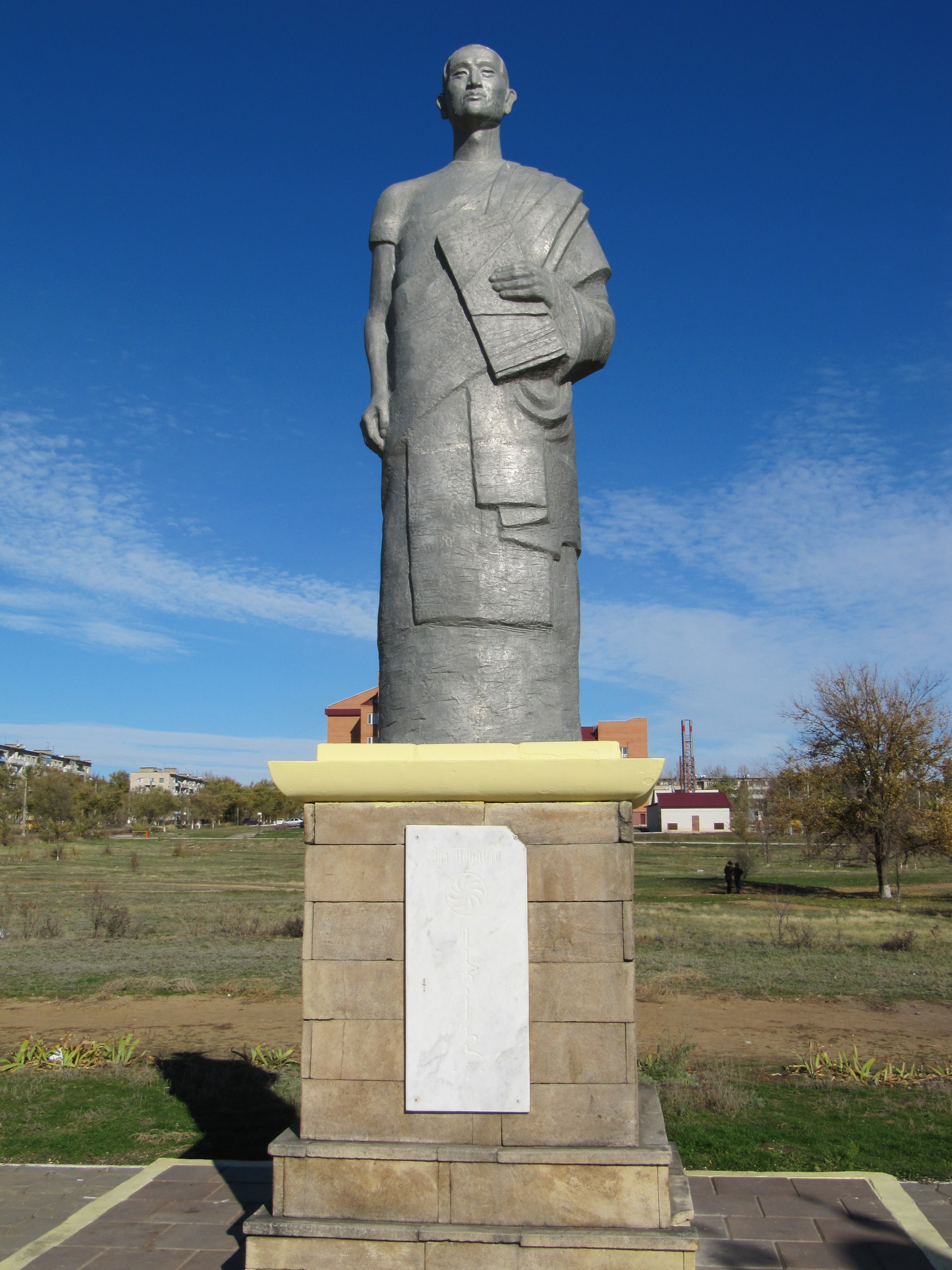Zaya Pandita on:
[Wikipedia]
[Google]
[Amazon]
 Zaya Pandita or Namkhaijamts (1599–1662) was a Buddhist missionary priest and scholar of Oirat origin who is the most prominent Oirat Buddhist scholar. Among his accomplishments is the invention of the Clear Script.
Zaya Pandita or Namkhaijamts (1599–1662) was a Buddhist missionary priest and scholar of Oirat origin who is the most prominent Oirat Buddhist scholar. Among his accomplishments is the invention of the Clear Script.
 Zaya Pandita or Namkhaijamts (1599–1662) was a Buddhist missionary priest and scholar of Oirat origin who is the most prominent Oirat Buddhist scholar. Among his accomplishments is the invention of the Clear Script.
Zaya Pandita or Namkhaijamts (1599–1662) was a Buddhist missionary priest and scholar of Oirat origin who is the most prominent Oirat Buddhist scholar. Among his accomplishments is the invention of the Clear Script.
Biography
Zaya Pandita was the fifth son of Babakhan, a minor Khoshut prince. After Babakhan converted toTibetan Buddhism
Tibetan Buddhism (also referred to as Indo-Tibetan Buddhism, Lamaism, Lamaistic Buddhism, Himalayan Buddhism, and Northern Buddhism) is the form of Buddhism practiced in Tibet and Bhutan, where it is the dominant religion. It is also in majo ...
in the early 17th century, he, like many other Oirat princes, wished for one of his sons to enter the Buddhist clergy. In pursuit of his wish, Babakhan chose Zaya to become a śrāmaṇera ("novice monk"). In 1615, Zaya journeyed to Lhasa
Lhasa (; Lhasa dialect: ; bo, text=ལྷ་ས, translation=Place of Gods) is the urban center of the prefecture-level Lhasa City and the administrative capital of Tibet Autonomous Region in Southwest China. The inner urban area of Lhasa ...
where he would study and practice Buddhism, including study under the guidance of the Lobsang Chökyi Gyaltsen, 4th Panchen Lama.
In 1638, Zaya Pandita left Tibet at the direction of the Panchen Lama
The Panchen Lama () is a tulku of the Gelug school of Tibetan Buddhism. Panchen Lama is one of the most important figures in the Gelug tradition, with its spiritual authority second only to Dalai Lama. Along with the council of high lamas, ...
to conduct missionary work among the Mongols
The Mongols ( mn, Монголчууд, , , ; ; russian: Монголы) are an East Asian ethnic group native to Mongolia, Inner Mongolia in China and the Buryatia Republic of the Russian Federation. The Mongols are the principal member ...
. One year later in 1640, he assisted Erdeni Batur
Erdeni Batur (in modern Mongolian: Эрдэнэбаатар, Erdenebaatar; ; d. 1653) was a Choros-Oirat prince generally considered to be the founder of the Dzungar Khanate, centered in the Dzungaria region, currently in north-westernmost part ...
, Khun Taiyishi of the Choros (Oirats)
Choros or Tsoros ( mn, Цорос, ; ) was the ruling clan of the Ööld and Dörbet Oirat and once ruled the whole Four Oirat. They founded the Dzungar Khanate in the 17th century. Their chiefs reckoned their descent from a boy nourished by ...
tribe, in assembling a pan-Mongol conference between the Oirat and the Khalkha Mongols
The Khalkha ( Mongolian: mn, Халх, Halh, , zh, 喀爾喀) have been the largest subgroup of Mongol people in modern Mongolia since the 15th century. The Khalkha, together with Chahars, Ordos and Tumed, were directly ruled by Borjigin kha ...
. The purpose of the conference was to encourage the formation of a united Mongolian front against potential external enemies, such as the Kazakhs, Manchus, and Russians
, native_name_lang = ru
, image =
, caption =
, population =
, popplace =
118 million Russians in the Russian Federation (2002 '' Winkler Prins'' estimate)
, region1 =
, pop1 ...
and to settle all internal matters peacefully. The conference produced a code, which provided protection from foreign aggression to both the Oirat and the Khalkha and guaranteed the free movement of people throughout Mongol land.
When not engaged in diplomacy between the Oirat and the Khalkha, Zaya Pandita spread Tibetan Buddhism to the Oirats, the Khalkha and even the Kalmyk people in far away Russia. In furtherance of his missionary work, Zaya Pandita composed a new alphabet, based on the traditional Mongolian alphabet, called " Clear script" (''todo bichig'') to transcribe the Oirat language as it is pronounced. By doing so, Zaya Pandita eliminated the ambiguities of the traditional Mongolian alphabet.
From the time Zaya Pandita developed the Clear Script in 1648 until his death in 1662, he translated approximately 186 Buddhist texts from Tibetan language to the Oirat language while still serving the religious needs of the Oirat tribes in Dzungaria.
The todo bichig script is still used by Oirats in Xinjiang
Xinjiang, SASM/GNC: ''Xinjang''; zh, c=, p=Xīnjiāng; formerly romanized as Sinkiang (, ), officially the Xinjiang Uygur Autonomous Region (XUAR), is an autonomous region of the People's Republic of China (PRC), located in the northwes ...
with slight revisions, and is taught alongside standard classical written Mongolian in that region.
References
*Halkovic, Jr., Stephen A. ''The Mongols of the West'', Indiana University Uralic and Altaic Series, Volume 148, Larry Moses, Editor, Research Institute for Inner Asian Studies, Indiana University, Bloomington, 1985. {{DEFAULTSORT:Pandita, Zaya 1599 births 1662 deaths Tibetan Buddhist priests from Kalmykia Lamas Creators of writing systems Buddhist missionaries Oirats Missionary linguists